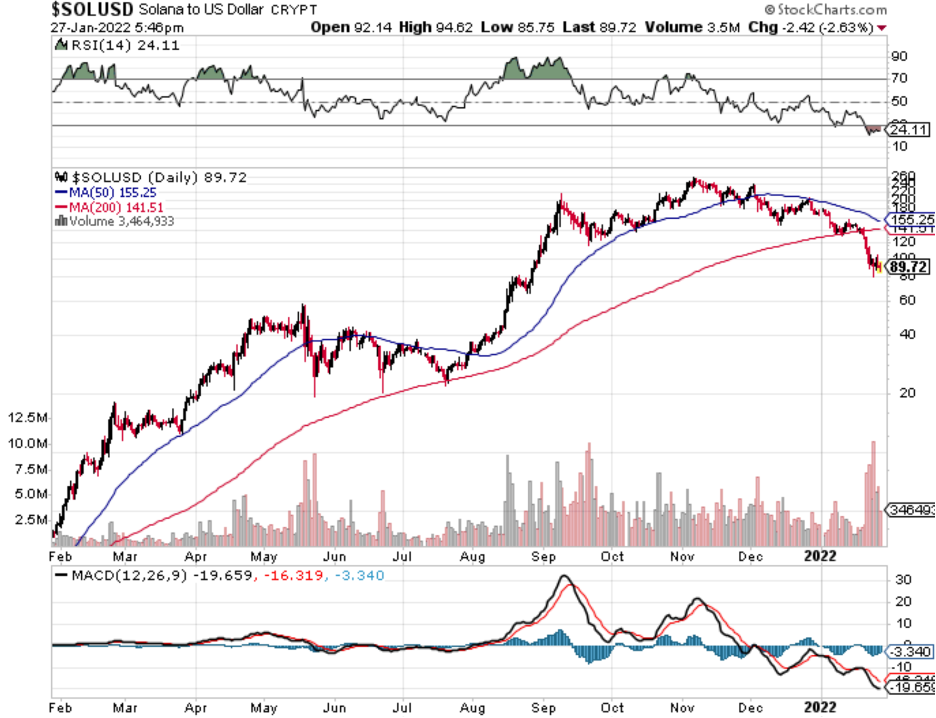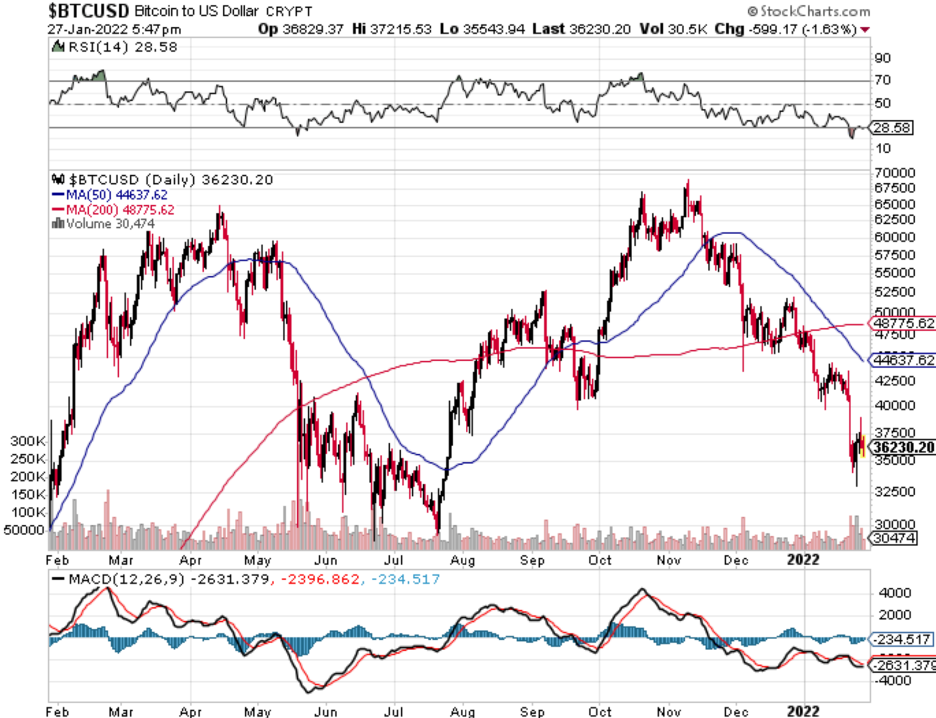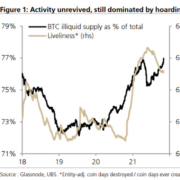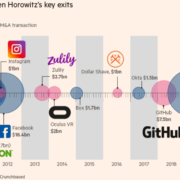The eighth biggest crypto by market cap and once hyped to the stars, Solana’s (SOL) repeated run-ins with bots, outages, and frustrated traders during the recent market crash could turn off many potential investors.
Emerging crypto are suffering more than Bitcoin (BTC) and Ethereum (ETH) in the recent selloff while Bitcoin is down 50% over this period, many of these smaller cryptos are down 50% in a week.
Then adding gas on the fire, structural bottlenecks have arisen.
Solano suffered its sixth serious outage of more than eight hours this month over the weekend, which a notice on its website attributed to excessive duplicate transactions causing a high level of network congestion.
It’s not shocking that these smaller networks can’t handle the trade flow.
Many are cobbled together on a shoestring budget.
Solana Labs co-founder Anatoly Yakovenko also pointed to an explanation on Twitter that cited market volatility as causing downtime, as bots rushed to earn bounties on leveraged positions eligible for liquidation.
Citing volatility as to why your product is down is an excuse because other networks were going through the same headwinds and managed gracefully.
A 10% decline in the Nasdaq won’t shut it down and this doesn’t help the naysayers who say that crypto is a bush-league operation.
To an extent, many of the smaller currencies are amateur and heightened volatility in an ecosystem that is already flooded with high volatility cannot be used as a reason for failure.
To not be able to absorb the volatility in stride augurs poorly for Solano and I would tell investors to avoid these crypto’s who can’t crack the top 5 or can’t stay online!
There will be growing pains and avoid them until they can figure out how to run a platform.
During these periods of network instability, crypto traders are often left unable to sell off their positions as transactions fail to complete on Solana’s network, yet another sign of how unreliable this emerging technology can be during times of stress.
When combined with a market-wide crash in crypto prices, investors rushed to offload their tokens are left to figure out other routes while their portfolios rapidly decline.
Remember that these networks don’t have a customer service number and you are sitting in your office chair pondering how to get access to your assets.
That’s exactly what you don’t want your investors to feel.
The founders of the currency attributed the structural issues to a “function of Solana’s success.”
However, I would say that the inability to anticipate higher data loads during selloffs doesn’t help these non-Bitcoin currencies.
Bitcoin certainly didn’t have problems handling the recent volatility.
Having so many transactions meaning it’s an attractive platform for developers and users isn’t the right way to look at it, because a certain level of functionality needs to happen otherwise this attractiveness reverses into a minus.
The bodes poorly for Solano to combat future problems because of the lack of vision at the management level.
An all-time peak of $259 recorded in November represented growth of almost 14,000% since the start of 2021—but following its continued issues, Solano retraced 4,800%.
Rival coins promising to reinvent the capabilities of blockchain technology are also targeting Solano. The value of Terraform Labs’ Luna token, which runs on the Terra protocol for algorithmic, fiat-pegged stable coins, has skyrocketed in the last year, rising more than 7,000% in value over the last 12 months.
I believe we will shortly see Solano developer activity and transaction activity significantly slowing with another haircut in price.
I don’t believe now is the time to call for a crypto “winter.”
Once crypto can elbow through a higher rate paradigm and that becomes priced into the asset class, the debasement of currency among other factors will take crypto higher.







